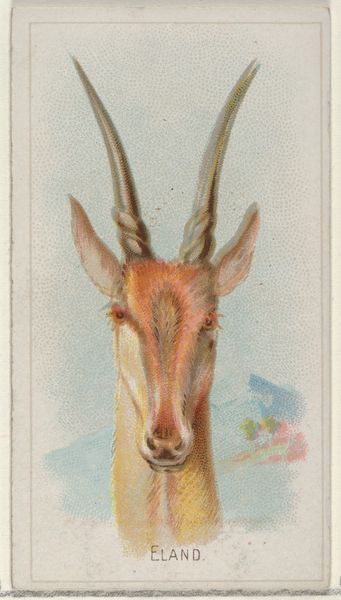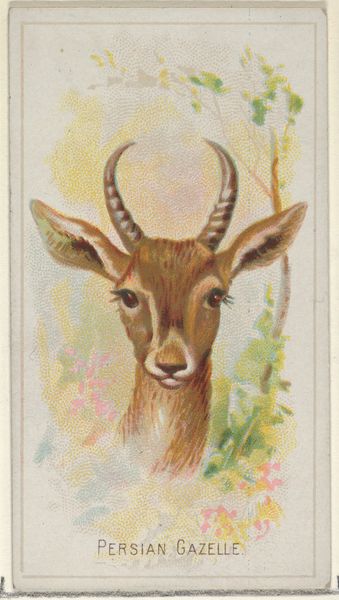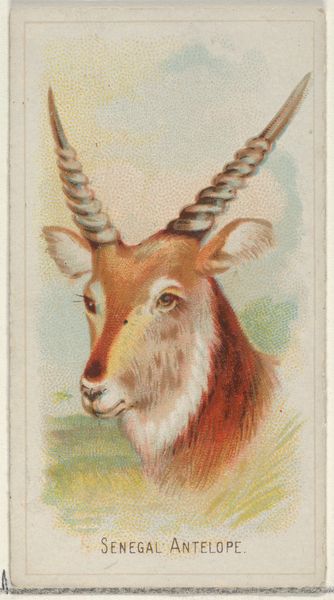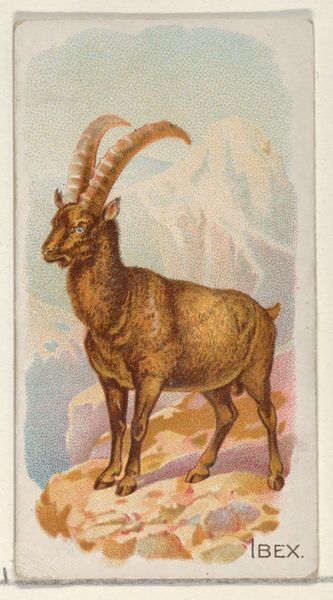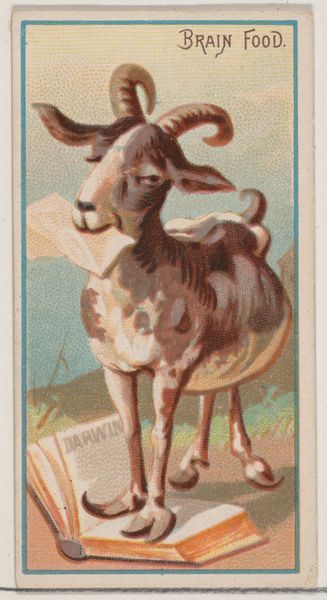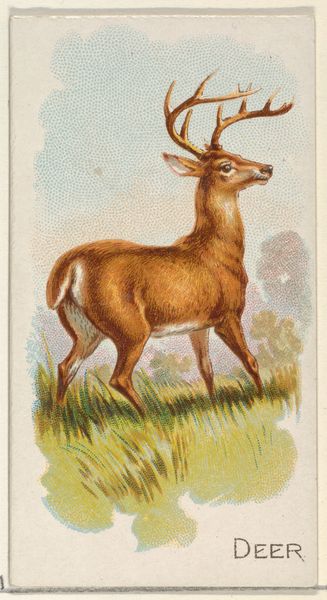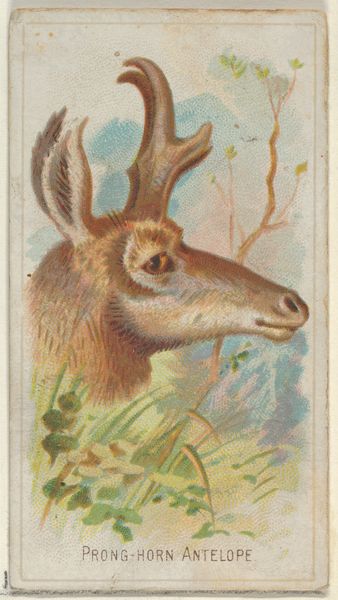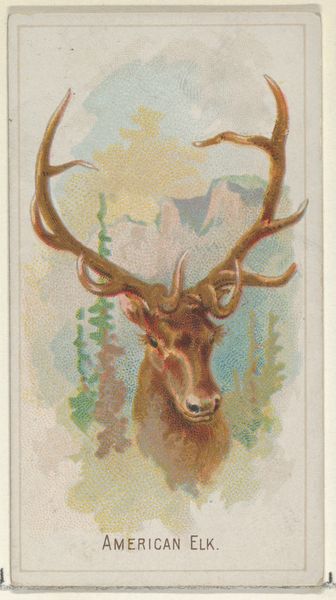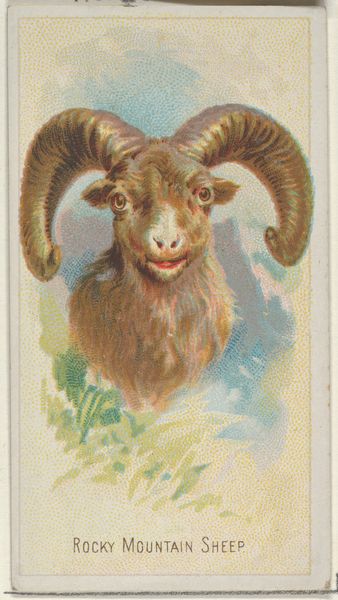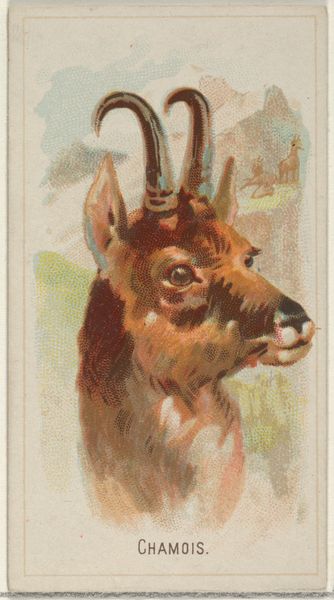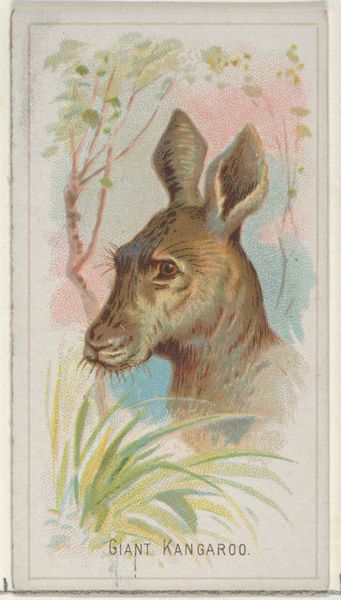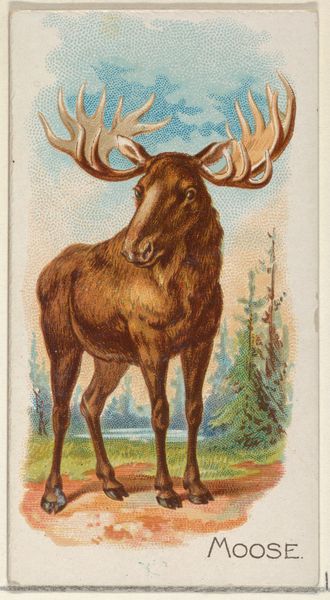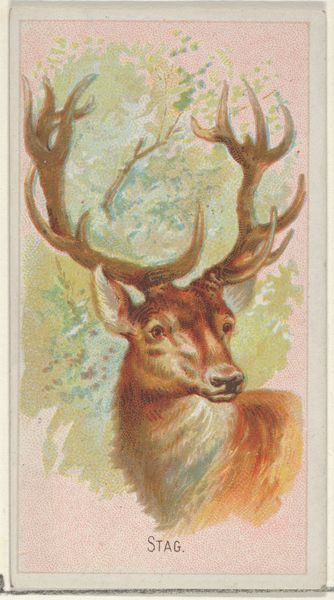
Ibex, from the Wild Animals of the World series (N25) for Allen & Ginter Cigarettes 1888
0:00
0:00
# print
#
coloured pencil
#
watercolour illustration
Dimensions: Sheet: 2 3/4 x 1 1/2 in. (7 x 3.8 cm)
Copyright: Public Domain
Editor: So, here we have "Ibex," from the Wild Animals of the World series by Allen & Ginter, dating to 1888. It’s a small print, almost like a trading card. It feels like a very straightforward, almost clinical depiction of this animal. How do you interpret this kind of representation? Curator: What I find fascinating about these types of prints is how they reveal the cultural moment's attitude toward the natural world. Produced as collectibles for cigarette packs, these images weren't just about illustrating animals; they were about presenting a specific version of the world to consumers. What's striking to me is how the Ibex is presented in a rather sterile landscape; it emphasizes a desire for control and understanding of the animal, almost like a specimen in a scientific study. Editor: That’s interesting, this idea of control. Is there something in the artistic style itself that points to this? Curator: Absolutely. Consider the clean lines and the very precise application of color. This is not a romantic, wild depiction, but a tamed one. Also, think about who produced and consumed these images. It's a late 19th-century context defined by industrialization and colonial expansion. These images arguably helped reinforce a sense of human dominance over the natural world, linking exotic animals to accessible commodities. Editor: So, these cards weren't just innocent depictions of wildlife; they reflect the complex power dynamics of the time? Curator: Precisely! It's a reminder that art, even in these seemingly innocuous forms, plays a role in shaping how we perceive and interact with our environment. Editor: I hadn't considered all that. Now I see this little card in a completely different light! Thanks. Curator: It’s about asking what these images do, not just what they show, which is crucial when interpreting visual culture.
Comments
No comments
Be the first to comment and join the conversation on the ultimate creative platform.
